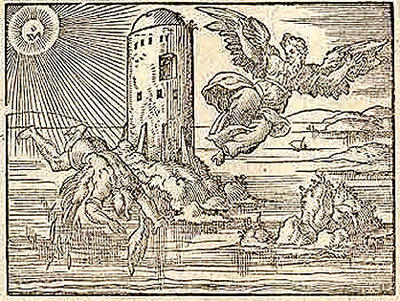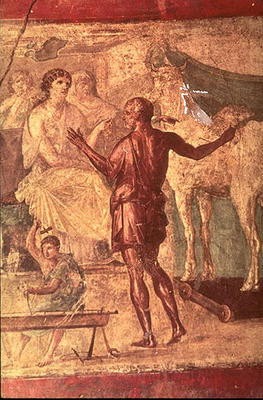
Air travel was the dream of humanity long before the Wright Brothers made it a reality. But was it ever actually achieved? Here is some interesting stuff to concider...
New archaeological discoveries suggest, astoundingly that it might have been, as much as 3500 years ago, and that the genius who achieved it was a man long thought to have been purely mythical - Daedalus, the architect of the notorious labyrinth of Knossos, in Crete.
Pasiphae, wife the Cretan king Minos, so the story goes, fell passionately in love with a magnificent bull, pride of the royal herds, and Daedalus devised a machine to enable her to have her wicked way with it. The monstrous product of this unholy union was the terrifying Minotaur. Minos ordered Daedalus to build the labyrinth, a tortuous open-air maze, to hide the beast away . To avoid the shameful secret becoming known Minos imprisoned Daedalus in it as well, along with his son Icarus who had helped him. But Daedalus collected feathers and, fixing them to his arms with wax, made wings for himself and Icarus, and they flew up and away. Icarus, in his excitement, flew too near the sun; the wax melted and he plunged into the sea to his death; but Daedalus flew on to
Recently, excavating in Bronze Age deposits near Knossos, a Greek archaeologist, Professor Aphron Asophos, came upon some twisted metal objects which, when restored, were small, lightweight wheelless chariots, each with an elongated cone in front and aerodynamically sophisticated wings on each side. Scratched on the side of each was an inscription in the Minoan script, Linear B, which included the word DAIDALOW. Which is to say: Daedalus!
Incredible as it may be, Asophos reasoned, he had stumbled on first, proof that Daedalus had been a real person, not merely a figure in mythology; and, secondly, that he really had tried to build a flying-machine - and here, presumably, were the prototypes!
Later, an excavation in similar-aged deposits at

(Picture : Daedalus, Pasiphae and wooden cow: Pompeian wall painting (House of the Vettii), 1st cent. A.D)
Forget feathers and wax: that was the only explanation that the amazed inhabitants of
Only he knew the secret; when he died, a wealthy man, lionized by the Syracusan royal family who had even caused Minos to have an unfortunate fatal accident when the latter came in search of him, Daedalus took the secret of flight with him to his grave, not to be rediscovered for nearly three and half thousand years.
Or did he? Even if we discount the description of a flying machine in operation by the prophet Ezekiel, in about 600 B.C., as being just a vision in his head, what are we to make of the designs of flying-machines by Leonardo Da Vinci in the early 16th century? Some of them look, in retrospect, very like the devices from
Had that phenomenal artist and mathamatician independently invented similar devices or, more likely, did Leonardo have access to some now-lost documents, handed down from the Greeks through the Arabs to Renaissance Italy? Is it possible that he lacked - as do we - only knowledge of how they were powered to make them fly once more?
Well there you have it, but who knows what may turn up in the future to alter my opinion, that’s why I invite you to keep an open mind and keep walking in this big weird world of ours!
I’m Average Joe


No comments:
Post a Comment